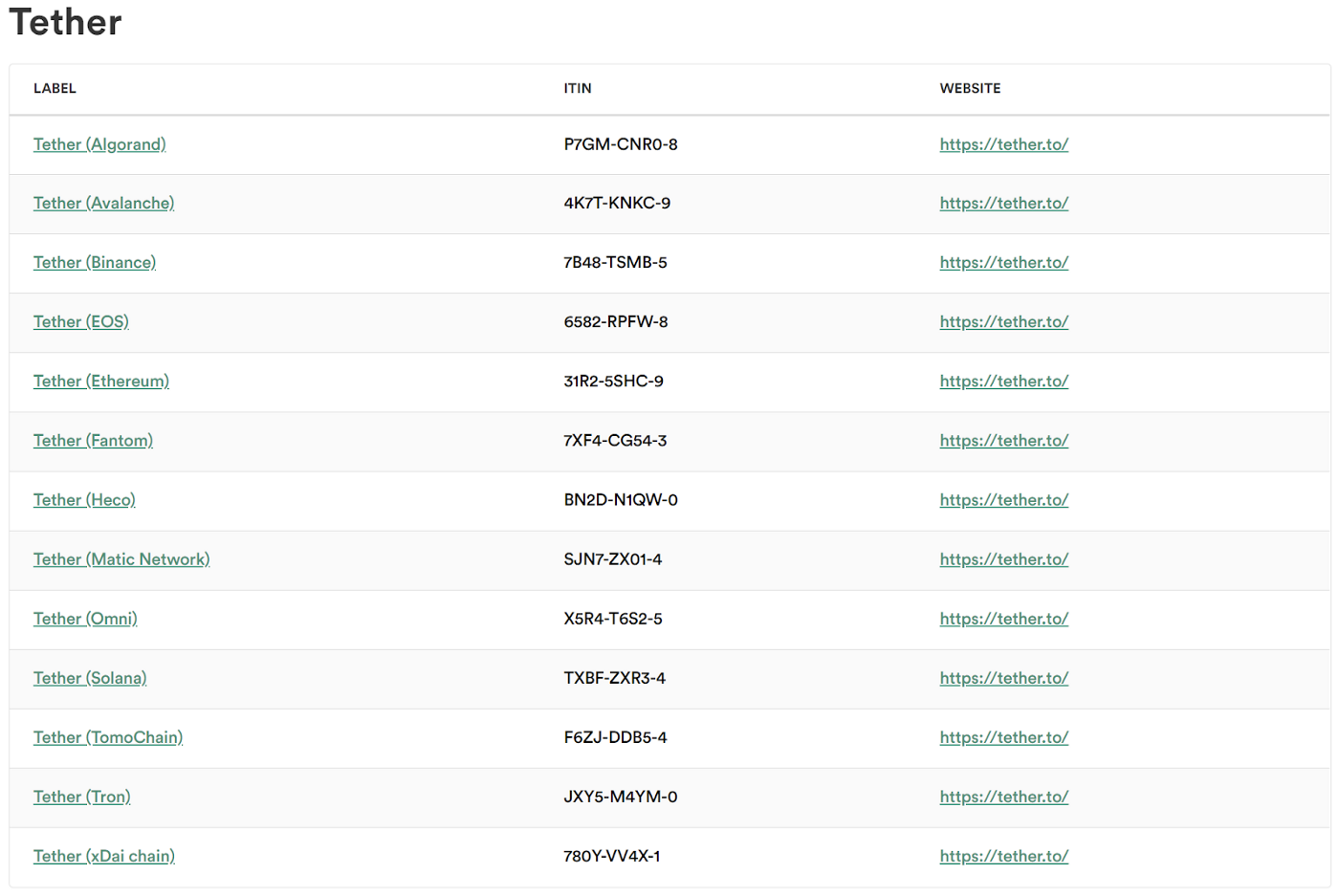Identification: International Token Identification Number (ITIN)
The token economy has gained significant momentum. As of today, an ecosystem of more than 5,100 publicly traded crypto tokens and over 245,000 Ethereum token contracts has emerged. However, due to the lack of holistic market standards, this wave of new tokens may confront market participants with ambiguity and uncertainty, exposing retail investors to avoidable risks and deterring institutional funds.
This is often caused by coincidentally similar token names or ticker symbols, but also by intentionally created confusion as part of scams. Sometimes different tokens carry the same ticker symbol across exchanges (e.g. Bitcoin Gold and the now inactive project Bitgem, which were both using BTG). Sometimes one and the same token carries different ticker symbols across exchanges (e.g. Bitcoin, which is to be found under XBT or BTC).
Sometimes a token is renamed but the old ticker symbol is kept, and sometimes a token receives a new ticker symbol while still keeping its old name (e.g. Bitcoin Cash, which was first to be found under BCC and is now listed under BCH since the nowadays inactive project BitConnect was already using BCC before).
In short, dealing with cryptographic tokens, and especially trading them on different exchanges, can be a real mess. The imminent lack of transparency combined with fast market developments especially in the Decentralized Finance sector creates high operational risks for all parties involved.
In order to increase transparency and safety, ITSA has developed the International Token Identification Number (ITIN) as a unique identifier that is conceptually similar to the International Securities Identification Number (ISIN). Hence, an ITIN serves as a non-ambiguous means of identification for cryptographic tokens. Yet, while an ISIN is assigned to a security on request of the issuer by the respective National Numbering Agency (NNA) that may or may not charge fees for potential costs incurred, an ITIN is assigned proactively, free of charge and on global level by ITSA itself in order to provide an inclusive and holistic global market standard for the identification of cryptographic tokens. Most notably, the ECB has specifically mentioned the ITIN in their recent paper on the use of DLT in post-trade processes.
The current developments in cross-chain interoperability validate the ITIN’s underlying assumption that each token needs to be identified on a token layer instead of an asset layer. Bitcoin and wrapped Bitcoin for example represent the same asset but they still look different from a technological perspective.
With the recent surge of new blockchain ecosystems in the field of cloud computing, distributed systems, and decentralized applications such as Solana, Algorand or Matic, various versions of Tether (USDT) have emerged running on different blockchains as application layer tokens. As seen in the Tokenbase list for Tether in figure 1 each of these Tether tokens needs to have an individual ITIN in order to properly identify them. In this framework, we assigned 13 individual ITINs, one to each Tether token.

Figure 1: Tokenbase list with all Tether tokens (Source: https://bit.ly/3zIofcd)
Moreover, ITINs will not only be assigned to payment and investment tokens in the financial sphere, but to all different types of tokens issued, regardless of their purpose or fungibility. An ITIN is a 9-digit alphanumeric code, composed of a Token ID and a Checksum (s. Figure 2).
Token ID
The Token ID consists of 2 blocks with 4 alphanumeric capital characters each that are separated by a hyphen (8 characters in total). Not included are similar looking characters such as the letters “I“, “L“ and “O“ as well as the numbers “0“ and “1“ in order to avoid any possibility of confusion. The total of 31 remaining alphanumeric characters allows to generate over 850 billion unique Token IDs with the 8-digit code. These are generated and assigned at random to each token currently on the market. Token IDs can also be requested before token issuance by the issuing party. Notably Token IDs that include actual words are eliminated to maximize fairness and to prevent distortions upon search requests.
Checksum
Each ITIN includes a deterministic checksum based on ASCII encryption. The checksum is a 1-digit alphanumeric character following the 8-digit Token ID. It is derived by first calculating the modulo of the sum of ASCII code values for the positions 1 to 8 of the Token ID, and subsequently assigning the respective ASCII code to the numerical result of the modulo. The checksum can be recalculated by everyone to verify the correct communication of the identifier and thus serves as a built-in security feature to prove the validity of each ITIN. Just like for the Token ID, the letters “I”, “L” and “O” as well as the numbers “0” and “1” are excluded to prevent confusion.
As an active member you can instantly create and assign ITINs through our API. If you want to create ITINs or become active member, please apply at https://my.itsa.global/apply-for-itin?hsLang=en.
Updated over 3 years ago